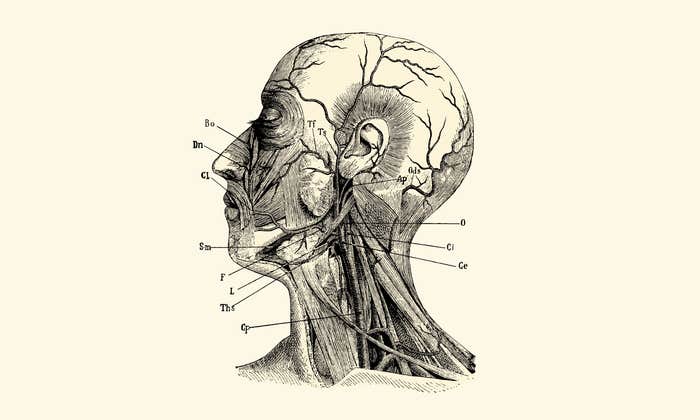Every physician remembers their first bad case. Mine went like this.
One morning, a man came into our emergency department with back pain. He had recently undergone repair of an aortic aneurysm, a kind of ballooning of the vessel at a weakness in its wall, and we were concerned about a problem with the repair. But all tests—including a CT scan of the suspect vessel—were normal. We could find nothing wrong, and his pain improved with analgesics. We sent him home.
The man had been riding Harleys for years and never gone down, until his heart stopped as he was leaving the hospital garage. A security officer saw him pitch off his bike. When they got to him he had no pulse. I recognized his beard and motorcycle leathers through the throng of activity in the trauma bay—it was the man with the back pain. The monitor showed ventricular fibrillation. After amiodarone, epinephrine, and defibrillation, he came back to life. Sinus rhythm and a pulse. Stable for the moment, he was hurried upstairs. I stood alone in the empty trauma bay, now silent after the chaos of the resuscitation. What had happened to this man? Where did we go wrong? What did we miss?

Despite our best efforts, all physicians experience this moment. Sometimes we answer these questions, learn from them—become better. But many times we do not. The human body is mysterious, the tools we use to peer inside, imperfect. On reviewing the man’s case, no clear errors arose. How do cases like this affect healthcare providers?
Scholarship shows that the emotional impact of known or perceived errors may leave a lasting mark on physicians. In an early seminal paper on medical error, J.F. Christensen and colleagues showed that errors exacted a significant toll on providers for months or even years after the incident.1 A.W. Wu and colleagues found that medical house staff experienced considerable emotional distress in the wake of an error.2 A.D. Waterman and colleagues confirmed these findings in a large sample of attending physicians in multiple fields, and found that medical error had a significant impact on confidence, job satisfaction, and sleep quality.3 It’s clear that when things go poorly for our patients, we suffer.
These findings resonated with me—the case involving the man on the Harley did exact an emotional toll, but not because we made a clear mistake. What, then, was so disturbing about this patient’s course?
Knowing when to let go can be extremely powerful.
Christensen’s paper offers a hint: They found that when physicians react to a perceived medical error, their emotional response tends to fall on a continuum defined by their attitudes toward control. Physicians who are highly confident in their ability to control a patient’s overall trajectory tend to experience more distress in the wake of a negative outcome than those who are less so. Control—that was the fundamental element that so unnerved me about this case. We were not ultimately in control of what befell this patient. That seemed to be at the heart of every negative emotion I felt.
Perception of control may be an overarching theme in shaping how medical providers respond to stressors associated with burnout, like chaotic work conditions, heavy documentation burden, and high caseloads. D.K. Freeborn found that the perception of diminished control within the practice environment was the single most important determinant of physician burnout.4 D.A. Campbell reported similar findings in a cohort of American surgeons, as did J. Rabatin and colleagues among primary care physicians.5,6 The way physicians think about and experience control, in other words, seems to be integral to our job, and to the way that it sometimes makes us suffer.
High patient volumes and interminable documentation are elements of modern practice that are not likely to change soon. But what about our attitude toward control?
Psychologist Johanna Shapiro believes that can change. In a 2011 paper, she and her colleagues presented a model of control dynamics aimed specifically at healthcare professionals.7 Healthcare is unique, the authors note, in that the culture of medical training strongly emphasizes intervention and control, while the practice of medicine is fraught with situations in which control is incomplete or unattainable. Shapiro argues that this tension can become malevolent when providers are ill-equipped to discriminate between the situations where some amount of control is possible and those where it is not.
Our intuition about the scope of our control may be rooted in a biased tradition. Western psychology has tended to cast control as ranging from a kind of active mastery to helpless passivity. But Shapiro’s research has shown that a four-part model of control may serve us better. She calls these parts positive assertive, positive yielding, negative assertive, and negative yielding. Two of these correspond to the familiar model mentioned above—positive assertive and negative yielding. The former suggests intervention and action. The latter, futility—a failure of control.
The two new modes offer more nuance. The positive yielding mode is a willful acceptance of the limits of active control, while the negative assertive mode illuminates an inappropriate struggle for control.
Physicians who are highly confident in their ability to control a patient’s overall trajectory tend to experience more distress in the wake of a negative outcome.
The use of a quadrant model like this is twofold. First, it allows a relinquishment of active control to be itself a kind of control—knowing when to let go can be extremely powerful. And second, it introduces value judgments. The negative modes of control are often ineffective at best and destructive at worst. Examples include “giving up” on a patient who hasn’t followed their medication regimen well (negative yielding), or performing an invasive procedure of limited benefit in the face of diagnostic uncertainty (negative assertive). This vocabulary allows us to identify maladaptive attitudes in difficult situations and improve behavior.
That morning, as the man with the Harley lay pulseless before me, it would have been easy to slide into a sense of despondency, or to use Shapiro’s vocabulary, into the negative yielding mode. And indeed I was pulled toward despair, that despite our most thorough efforts this man was so near to death. But in reflecting on that response I discovered a subtle choice—I could recast the situation in an alternative light. We had been diligent, and yet the outcome had been beyond our control. I recognized the limits of my influence, which allowed me to focus on the elements that were more amenable to control—resuscitation of an unstable rhythm.
The quadrant model of control stands to be a useful tool not only for medical providers, but for anyone facing complex, challenging situations. It provides a paradigm to help parse when best to act, and, what’s more, requires attention and reflection, which have themselves been shown to be critical tools in defense against professional burnout.8 With burnout now affecting nearly half of all American physicians, we need all the tools we can get.
Clayton Dalton is an emergency medicine resident at Massachusetts General Hospital in Boston. He has published stories and essays with NPR, Aeon, and The Los Angeles Review.
Lead image credit: kwanchai.c / Shutterstock
References
1. Christensen, J.F., Levinson, W., & Dunn, P.M. The heart of darkness: The impact of perceived mistakes on physicians. Journal of General Internal Medicine 7, 424-431 (1992).
2. Wu, A.W., Folkman, S., Mcphee, S.J., & Lo, B. Do house officers learn from their mistakes? Journal of the American Medical Association 265, 2089-2094 (1991).
3. Waterman, A.D., et al. The emotional impact of medical errors on practicing physicians in the United States and Canada. Joint Commission Journal on Quality and Patient Safety 33, 467-476 (2007).
4. Freeborn, D.K. Satisfaction, commitment, and psychological well-being among HMO physicians. Western Journal of Medicine 174, 13-18 (2001).
5. Campbell, D.A., Sonnad, S.S., Eckhauser, F.E., Campbell, K.K., & Greenfield, L.J. Burnout among American surgeons. Surgery 130, 696-702 (2001).
6. Rabatin, J., Williams, E., Baier Manwell, L., Schwartz, M.D., Brown, R.L., & Linzer, M. Predictors and outcomes of burnout in primary care physicians. Journal of Primary Care and Community Health 7, 41-43 (2016).
7. Shapiro, J., Astin, J., Shapiro, S.L., Robitshek, D., & Shapiro, D.H. Coping with loss of control in the practice of medicine. Families, Systems & Health 29, 15-28 (2011).
8. West, C.P., Dyrbye, L.N., Erwin, P.J., & Shanafelt, T.D. Interventions to prevent and reduce physician burnout: A systematic review and meta-analysis. Lancet 388, 2272-2281 (2016).


























